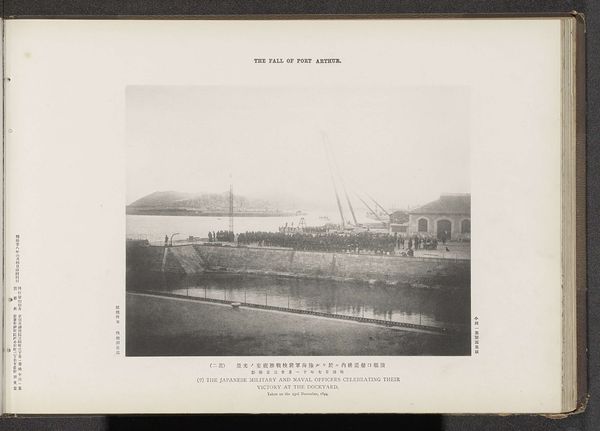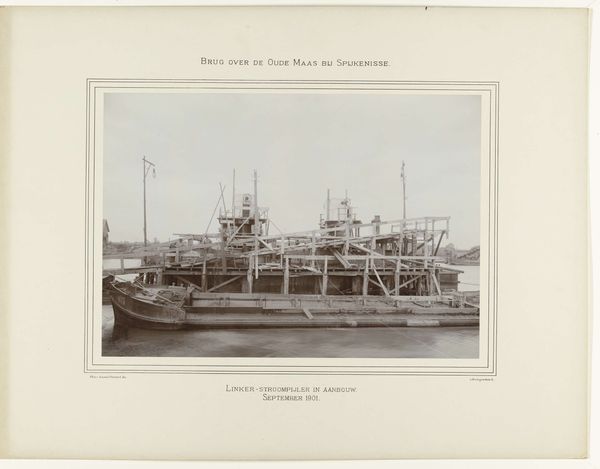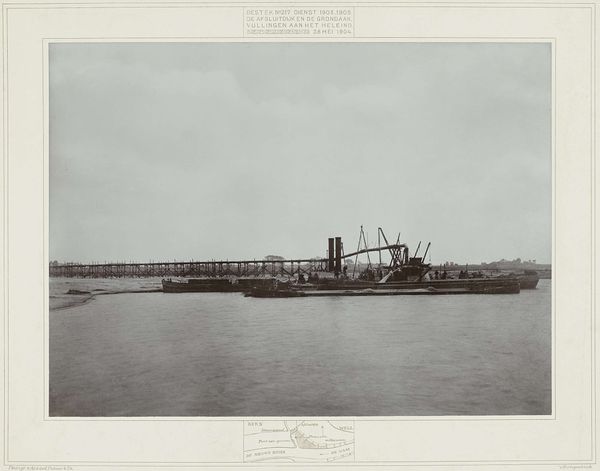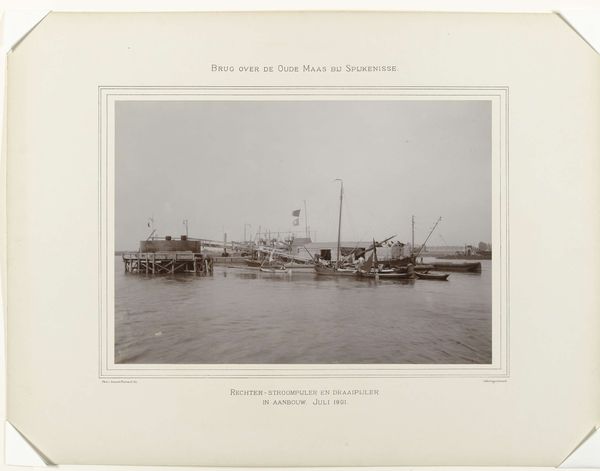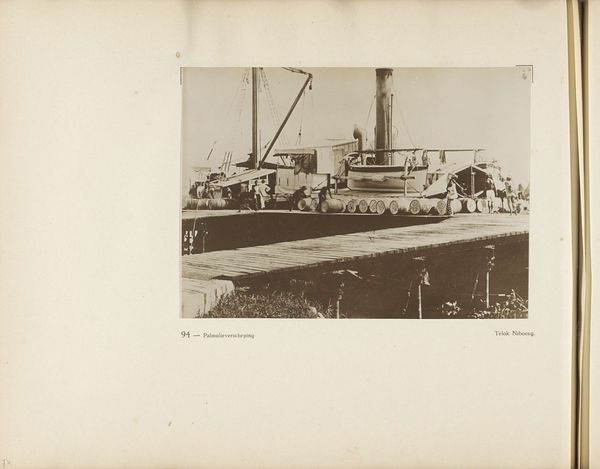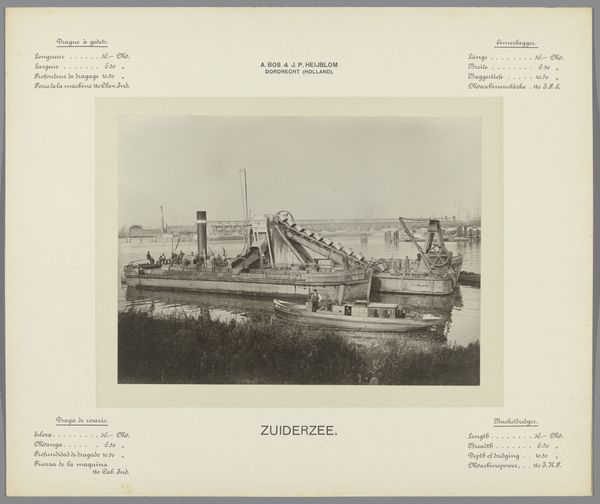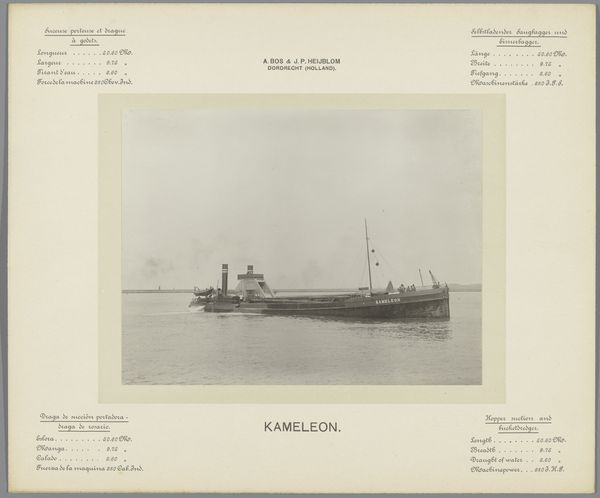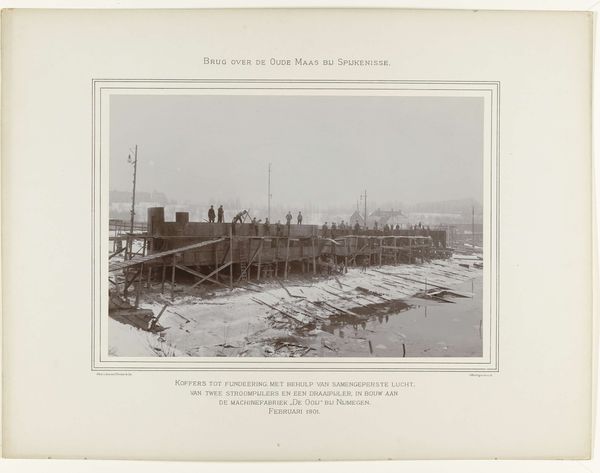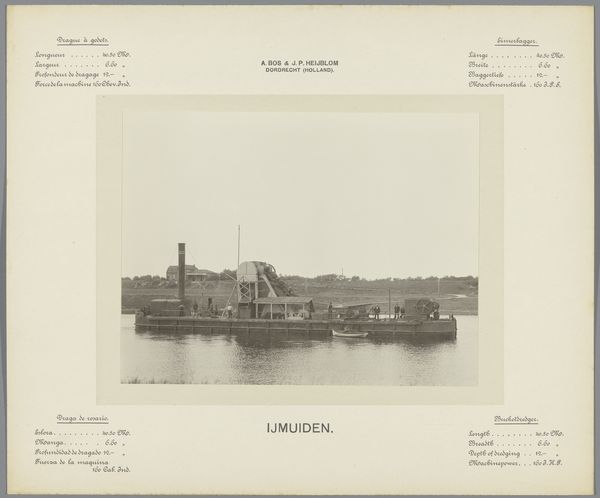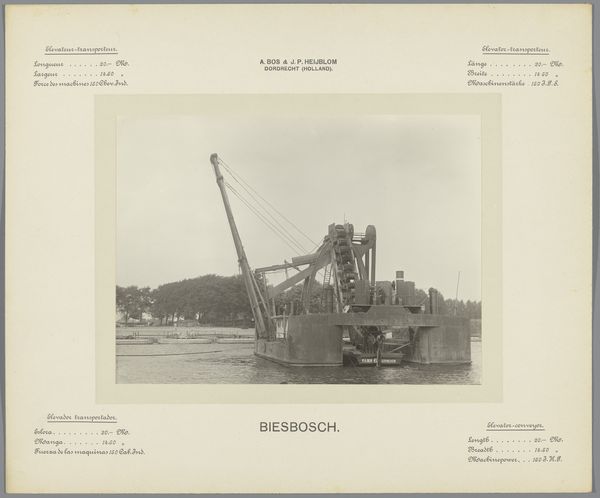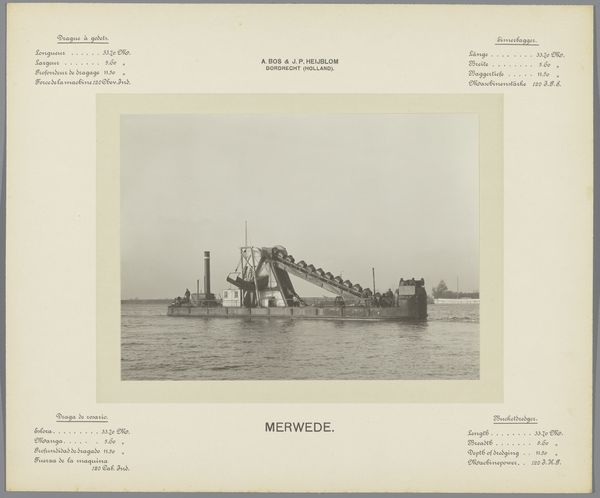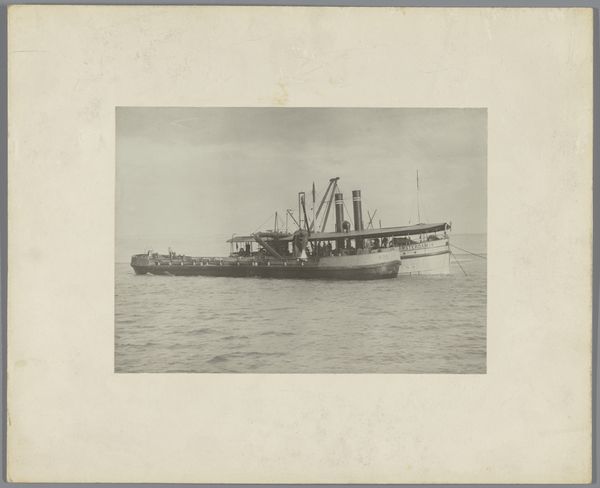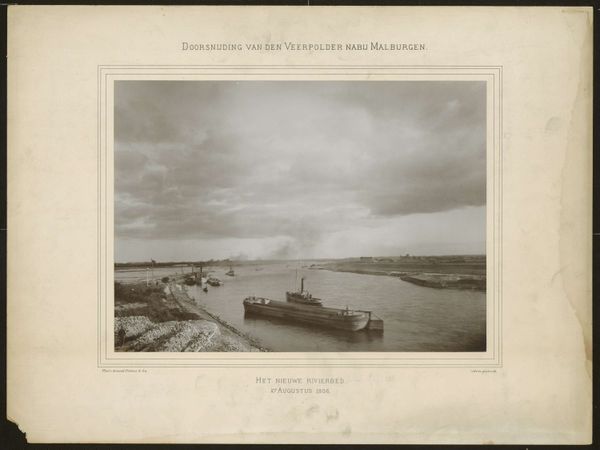
Bouw van de oeverpijler voor de brug over de Oude Maas bij Spijkenisse 1900 - 1911
0:00
0:00
print, photography
# print
#
landscape
#
photography
#
realism
Dimensions: height 293 mm, width 419 mm
Copyright: Rijks Museum: Open Domain
Editor: This is "Bouw van de oeverpijler voor de brug over de Oude Maas bij Spijkenisse," a photograph taken sometime between 1900 and 1911 by Arnaud Pistoor & Zoon. The landscape is industrial and yet feels quite muted and still, especially considering the activity of bridge-building depicted. What do you notice first about the composition of this image? Curator: Immediately, the stark contrast in tonal value arrests my attention. Notice how the geometry of the crane contrasts with the organic line of the riverbank and the flatness of the water? There’s a tension created by this juxtaposition, heightened by the limited grayscale palette. How does this interplay affect your perception of space? Editor: It almost flattens it, creating a very shallow depth of field despite being a landscape. Is that intentional? Curator: Precisely! The photographer is not just documenting a construction site. He’s actively manipulating perspective to invite a critical consideration of form and the interplay of industrial and natural elements. The composition leads us to consider photography’s formal potential. Are we to understand that these receding forms are placed according to an intellectual understanding or is the relationship determined by some intuitive criteria? Editor: It seems less intuitive and more deliberate, given how balanced everything appears. The textures also feel so prominent in the absence of color. Curator: The materiality of the scene, the grain of the wood, the rough texture of the water - these are foregrounded because the absence of color invites a different kind of sensory engagement, isn't it? Consider too, how the eye navigates from the solidity of the barge to the vanishing point. It is subtly dynamic, isn't it? Editor: It is. I see how focusing on these formal elements adds a layer to understanding the work. Thanks! Curator: Indeed! By emphasizing the interplay of form, line, and texture, the photographer prompts us to see beyond mere representation and appreciate the aesthetic language of the photograph itself.
Comments
No comments
Be the first to comment and join the conversation on the ultimate creative platform.
